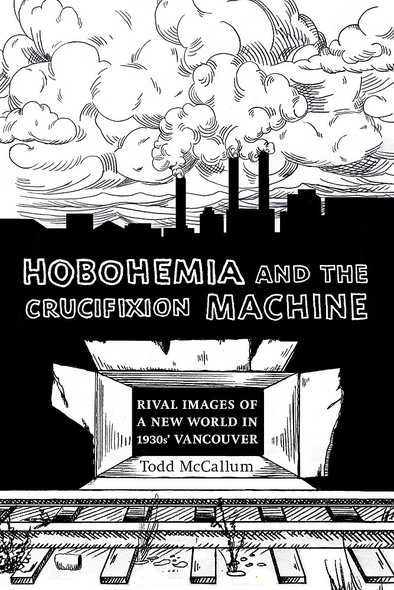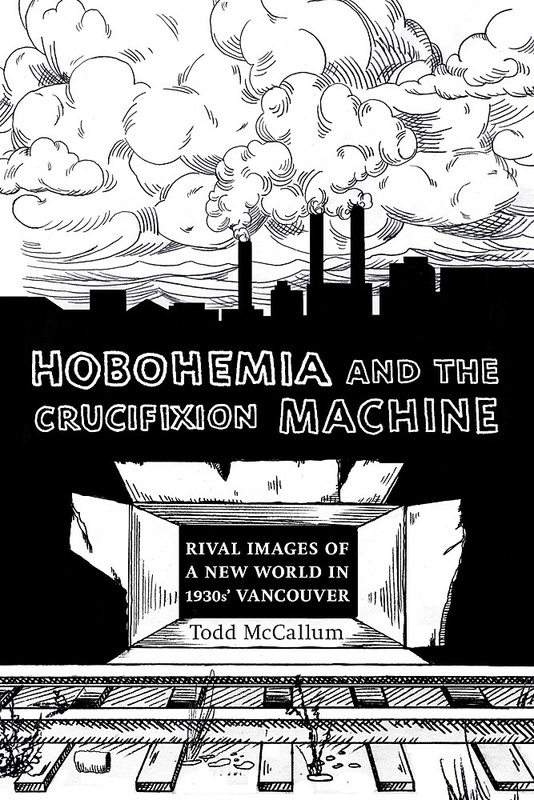Hobohemia and the Crucifixion Machine
Rival Images of a New World in 1930s Vancouver
In the early years of the Great Depression, thousands of unemployedhomeless transients settled into Vancouver’s “hobojungle.” The jungle operated as a distinct community, in whichgoods were exchanged and shared directly, without benefit of currency.The organization of life was immediate and consensual, conducted in theabsence of capital accumulation. But as the transients moved from thejungles to the city, they made innumerable demands on Vancouver’sRelief Department, consuming financial resources at a rate thatthreatened the city with bankruptcy. In response, the municipalityinstituted a card-control system—no longer offering reliefrecipients currency to do with as they chose. It also implemented newinvestigative and assessment procedures, including office spies, toweed out organizational inefficiencies. McCallum argues that,threatened by this “ungovernable society,”Vancouver’s Relief Department employed Fordist management methodsthat ultimately stripped the transients of their individuality.
Vancouver’s municipal government entered into contractualrelationships with dozens of private businesses, tendering bids formeals in much the same fashion as for printing jobs and constructionprojects. As a result, entrepreneurs clamoured to get their share ofthe state spending. With the emergence of work relief camps, theprovincial government harnessed the only currency that homeless menpossessed: their muscle. This new form of unfree labour aided theprovince in developing its tourist driven “image” economy,as well as facilitating the transportation of natural resources andmanufactured goods. It also led eventually to the most significantprotest movement of 1930s’ Canada, the On-to-Ottawa Trek.Hobohemia and the Crucifixion Machine explores the connectionsbetween the history of transiency and that of Fordism, offering a newinterpretation of the economic and political crises that wracked Canadain the early years of the Great Depression.
Todd McCallum is an assistant professor in theDepartment of History at Dalhousie University.
List of Tables vii
Preface ix
INTRODUCTION: From Fordlandia to Hobohemia
Homeless Men and the Relief Industry 3
A Strike, a Conference, and a Riot
December 1929 to January 1930 27
“Useless Knowledge” About Jungle Life
The Utopian Practices of Hobohemia, 1930–32 69
The Crucifixion Machine and the Quest for Efficiency
The Relief Industry, Administration 115
The Racket in Tickets and the Traffic in Lives
The Relief Industry, Consumption 155
“Work Without Wages,” or, Paving the Way for EconomicDevelopment
The Relief Industry, Production 195
CONCLUSION: Vancouver, “The Mecca of the Surplus”243
Notes 251
Bibliography 289
Index 301





